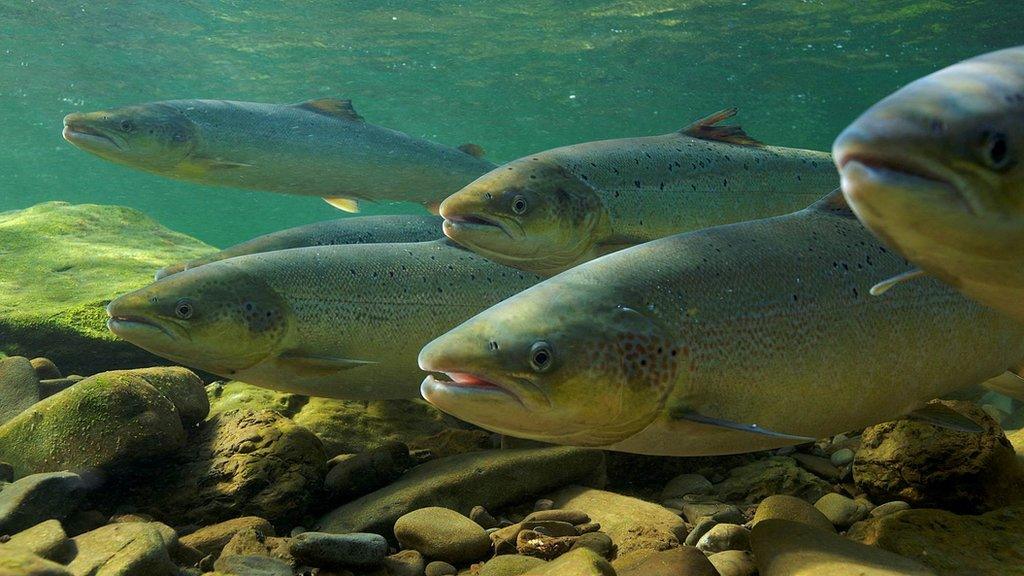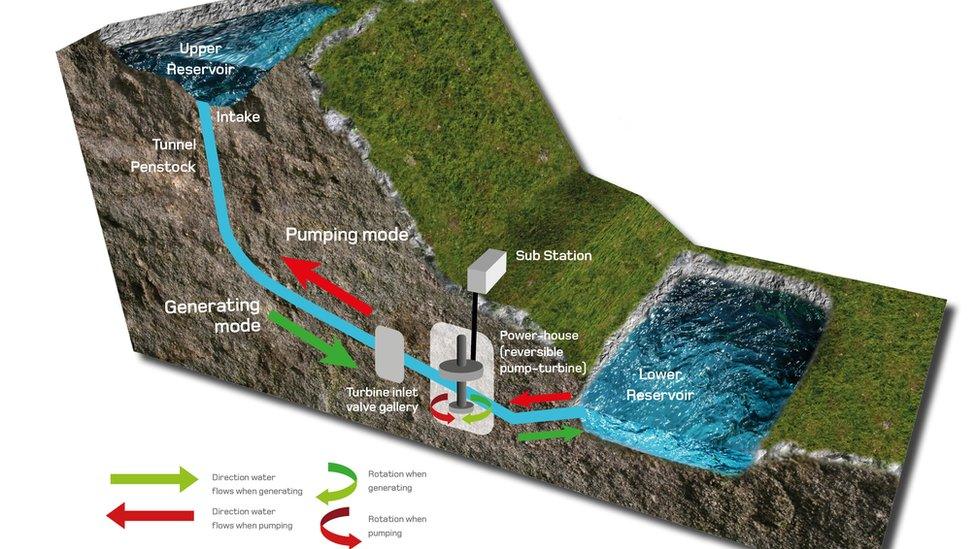Loch Ness hydro power 'gold rush' branded a disaster
- Published
- comments

Loch Ness has plans for three pumped storage hydro power stations
Campaigners say building more power stations on Loch Ness could be a disaster for wild fish populations.
The Ness District Salmon Fishery Board wants an immediate moratorium on further pumped storage hydro schemes after plans were lodged for a third.
Between them, they say the schemes will be capable of raising and lowering the water levels by more than two feet.
Industry body Scottish Renewables says pumped storage is a vital component in decarbonising the electricity grid.

Brian Shaw says more research is needed on how pumped hydro power affects fish
Pumped hydro works by using excess off-peak power to push water uphill into a holding reservoir high up the mountain.
When the electricity is needed, the water rushes through turbines while travelling back down to the lower reservoir.
It was originally used to supplement supplies at times when demand was high but is growing increasingly important as a means of storing renewable energy for when the wind is not blowing or the sun not shining.
'Unregulated gold rush'
SSE's Foyers power station on the east side of Loch Ness was completed in 1974 and discharges 200 tonnes of water per second at full steam.
A second project - named Red John - has planning consent and was recently sold to new owners.
Plans have also been unveiled for a third power station called Loch Kemp.

Atlantic salmon are now classed as endangered
Brian Shaw, director of the Ness District Salmon Fisheries Board (NDSFB), says the "iconic" Loch Ness should not be subjected to "an unregulated gold rush".
He added: "Such dramatic, indeed astonishing, fluctuations in water levels will play havoc with the shoreline ecology, disrupt natural currents within the loch and potentially raise the temperature of Loch Ness."
In line with wider monitoring, Atlantic salmon numbers in the Ness catchment have been in significant decline for decades.
Last month the International Union for Conservation of Nature reclassified them from "least concern" to "endangered".

An illustration of a pumped storage hydro scheme planned for near Dores on Loch Ness
An environmental impact assessment into the proposed Loch Kemp plans examined how much water would be drawn from the three power stations.
It said that filling all three high reservoirs from empty would reduce the level of Loch Ness by 73 cm (2ft 5in).
But it said that would be an extreme case and it was unlikely all schemes would pump water uphill at the same time.
Last year Scottish Renewables published a report into the economic impacts of pump storage hydro power and concluded that the next generation of such schemes could be worth up to £21bn to the economy.
Report author Andrew MacNish Porter says they are a vital component in helping the UK achieve its net-zero targets.
He added: "I don't think it's inevitable that pumped storage hydro projects come into conflict with these interests and developers are held to rigorous planning and consenting processes.
"Developers will look to minimise any environmental impact both during the construction phase and the operational phase"
The Loch Kemp Storage scheme is being built by Statera,
Statera's business development director in Scotland, David Rodger, said they were "disappointed" with the petition.
"Far from causing problems for water levels in Loch Ness, the opposite is the case. Pumped storage hydro schemes can help tackle the issues being caused by climate change by releasing water during dry periods and storing water to help flood management," he said.
"The impact of the Kemp scheme is likely to marginally increase the fluctuations in Loch Ness, but no more so than occurs through natural weather patterns today."
Mr Rodger said the company had undertaken extensive assessments of the scheme's design over the last two years and published these in their Environmental Impact Assessment, alongside the planning application.
"Loch Kemp offers a range of benefits including better water management, substantial carbon savings, improved energy security and a boost to local jobs. We are happy to discuss the project with anyone who has concerns about it," he added.